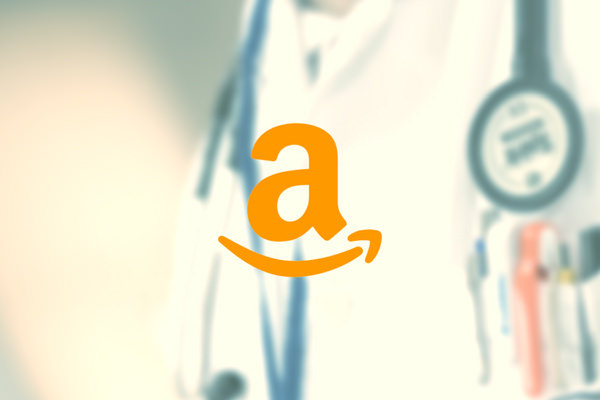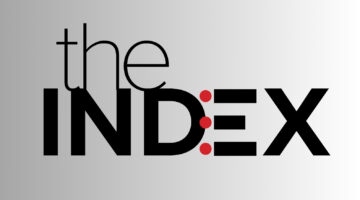
On Thursday, retail and tech giant Amazon made its next move into healthcare, announcing an agreement to acquire primary care provider One Medical in a deal valued at about $3.9 billion. Experts say the deal will help Amazon diversify its healthcare division, signaling that the company has entered the sector for the long haul. But they believe it still is not a real threat to health systems.
Should the deal close, it will be the third most expensive acquisition Amazon has ever made, following Whole Foods in 2017 and MGM earlier this year. It is the first major acquisition the company has announced under the leadership of CEO Andy Jassy, who has vowed to make growing the company’s healthcare unit a priority.

Consultants: Help Define What’s Next In Healthcare Benefits
Help shape the future of healthcare benefits by sharing your insights.
The deal is the latest on an increasingly long list of moves Amazon has made in the healthcare industry. These include buying PillPack, the company’s online pharmacy, and launching Amazon Care, its telehealth business for employers.
“This move tells us both that Amazon is aware of what they lack, but also that they really may not have a grand strategy as of yet but are continuing to find value buying — particularly on the downbeat of the market here — and developing both solutions and services within the healthcare space that give them options,” said Nathan Ray, partner at consulting firm West Monroe.
Michael Greeley, a partner at Flare Capital Partners, agreed. He said the bets the company is making probably won’t yield significant results for five years or so, but it is clear that Amazon is working diligently to “stick together a much more comprehensive healthcare business.”
Moving into primary care will enable Amazon to catch people at the beginning of their healthcare journey, Greeley pointed out. The company chose to make this move with One Medical because it is the most developed company among a scarcity of branded, independent primary care assets on the market, he said.

Tackling Rising Drug Costs and Growing Popularity of GLP-1’s
See how Quantum Health is providing the steps to help their members tackle the cost of specialty medications and other drugs.
Still, One Medical is not without problems. Last March, the company came under fire after reports revealed that it let people who weren’t eligible for Covid-19 shots jump the line during the early days of the vaccines’ rollout. Five months later, its employees tried to unionize as a response to alleged poor working conditions, inadequate patient care quality and mismanagement of the company’s pandemic response. Additionally, One Medical is still losing money — it posted a net loss of nearly $91 million during the first quarter of this year.
One Medical’s position as a well-known early player with strong brand equity outweighs these faults, according to Deena Shakir, partner at Lux Capital. She noted she has seen many startups be pitched as “the One Medical for X, Y, and Z.”
While One Medical primarily makes money through charging employers, it has a strong consumer brand too, and has been positioning itself as a “digital front door” for healthcare. This, along with its commitment to technology (One Medical has a homegrown EMR and user-friendly app), make it seem like a good fit for Amazon, Shakir said. She added that there is also a significant advantage in the Iora piece of the pie — One Medical acquired Iora Health, a primary care provider for adults enrolled in Medicare, last September.
There are also “interesting synergies” to think about now that Amazon has footholds in pharmacy, grocery and now primary care, according to Alyssa Jaffee, partner at 7wireVentures. She said this could position Amazon as a key player in healthcare, given the growing importance of social determinants of health.
She thinks the deal further validates the Big Tech’s role in the healthcare sector. But this shouldn’t be an immediate source of anxiety for health systems. The type of care Amazon is providing is transactional — it’s not longitudinal, and it’s certainly not acute. Jaffee said the deal simply pushes health systems to provide more convenience for their patients.
“The role of the provider organization is still quite strong as these organizations are multidisciplinary facilities to treat all kinds of people,” Jaffee said. “While this an interesting acquisition, we must remember that One Medical currently serves less than a percentage of the U.S. population. Health systems need to exist. That said, the stakes are now higher.”
This deal may also push retail companies like CVS and Walgreens to ramp up their primary care services. With Amazon now in the market, “a delightful consumer experience” will be a critical must-have instead of a nice-to-have, according to Shakir. She also said these chains may choose to focus more on the broader market outside of high-income, urban professionals — especially in areas with significant populations covered by Medicaid.
CVS and Walgreens did not respond to requests for comment on the deal, nor did One Medical and Amazon.
Some of One Medical’s competitors said they think the deal is net positive as it brings awareness to the value of primary care, though one said the end-result may mean consumers pay higher prices for convenience.
Fay Rotenberg, CEO of virtual primary care startup Firefly Health, said she thinks the deal is focused on convenience and probably won’t solve for value. While the deal could be very successful in providing a narrow slice of the population with convenient care, she thinks that care will likely be expensive.
By contrast, Firefly Health differentiates itself as a company focusing on reducing costs and serving broad populations rather than improving just convenience, Rotenberg argued.
The jury will be out for a while on how effective this merger is in terms of improving outcomes and reducing cost, but one thing is clear. With this move into primary care, Amazon is serious about creating a comprehensive healthcare unit – contrast that with Google, which shut down its Google Health unit. What excites experts most about the deal is that it allows the company to integrate its bread and butter — technology enablement, convenience and low costs — into primary care to increase access for patients across the country.
Photo: Flickr, Cerillion Skyline






